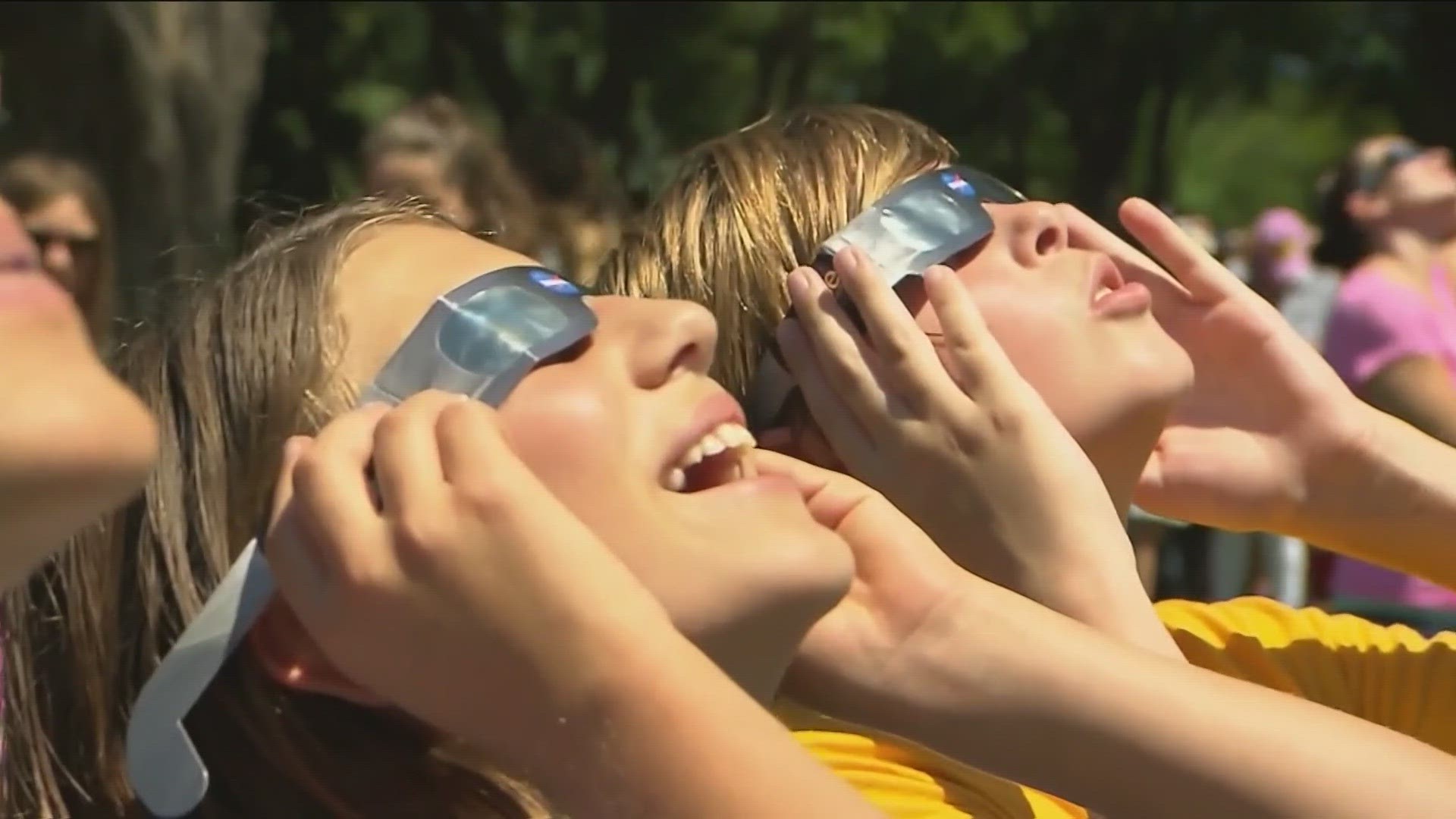SAN DIEGO — Before you look up at the solar eclipse next week, ophthalmologists are warning people to protect their eyes.
“Solar burn” is a real condition that eye doctors say they see in patients after an astronomical event.
Doctors are warning people not to be so engrossed in the eclipse that when you look up, you forget to look down at your kids and see they’ve tossed the solar glasses and view box and are staring straight up at the sun.
This can be extremely dangerous for any eye but especially children.
It's less than five days from the solar eclipse. While San Diego is not in the path of totality, a partial viewing can still damage your eyes if you stare at the sun longer than a minute.
“Do not stare at the eclipse with your naked eye,” said Dr. Natalie Afshari, Professor of Ophthalmology at UC San Diego Health.
She says patients who have gazed at the sun have been treated for solar retinopathy or solar burns.
“It’s unfortunate, because these are healthy, wonderful people who were just enjoying the moment,” said Afshari.
She describes how Solar Retinopathy occurs. Afshari says when a person stares at the sun that light goes through the cornea, which is the lens of your eye and that can become a cataract over time.
That bright light will burn your retina. A person may not feel pain or a burn and it may take 12 hours to feel or see any symptom.
If you do see a spot or your vision is hazy or blurry you need to seek medical attention.
Doctors say there is no treatment, and it could take 3-6 months to subside or a person could suffer permanent damage.
“A very short period of time of looking at the sun could be reversible. But every cell is different, and every person is different,” said Afshari.
Photographers should also use a solar filter when looking through the lens of when they capture the image of the eclipse.
And don’t think your regular shades are going to protect you.
“Sunglasses only block the light about 60% of light rays. But these eclipse glasses block about 99.9% of light rays. And that’s why they are safe,” said Afshari.
The American Astronomical Society suggests you buy solar glasses from one of their recommended sites that meet international safety standards. And avoid third party retailers like eBay or Amazon Marketplace. Inspect your glasses and make sure they have an ISO seal and certified with the number 12312-2.
Since there are counterfeits out there, look at a bright light through the glasses, you shouldn’t see it at all or it is faint, or when you look at the sun it may look like the outline of a light bulb.
You also have the choice of watching the eclipse through the view box or streaming it online.
“We do not want people enjoying the eclipse for a couple of minutes or a few minutes to lead to having that permanent hazy and blurry vision in the center,” said Afshari.
The American Academy of Ophthalmology says they’ve updated their guidelines and if your old solar glasses are ISO seal compliant and they are no damages or scratches, they will last beyond the three year expiration date often found on the frames.
The partial solar eclipse will be viewable on April 8 starting at 10:03 a.m., peak at 11:11 a.m. and end by 12:23 p.m.
WATCH RELATED: How ancient cultures marked the solar eclipse with myths and superstitions

